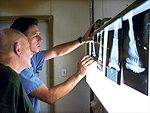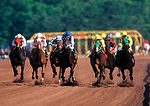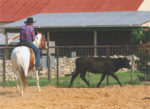Advertise Follow Us
Articles Tagged with ''Heather Smith-Thomas''
The vital information that technology can provide is another reason for farriers to work closely with veterinarians
Read More
Conformation's Influence on Motion
Understanding the subtle details of a horse’s conformation will best prepare you for effective trimming and shoeing
Read More
Fly, Insect Control A Must For Farrier Safety
Knowledge of pest behavior helps in repellent choice, application
Read More
New Track Surfaces Present Challenges To Platers
Jury still out on the best way to shoe for synthetic tracks
Read More
Dealing with Sheared Heels
The causes of this common problem may be more complex than they appear on the surface
Read More
Helping a Racehorse to the Winner's Circle
Expert farriers share trimming and shoeing techniques they’ve used to help Thoroughbreds, Quarter Horses and steeplechasers reach peak performance
Read More
Colorado Farrier Program Reaches Out To Wounded Warriors
Horseshoeing among programs offered as part of helping some veterans transition back to civilian life
Read More
Advice for Dealing with Underrun Heels in Western Peformance Horses
A pair of Texas farriers share how they deal with this all-too-common problem
Read More
The Farrier’s Role In Rehabilitation After Traumatic Injuries
Shoers are an important part of the overall equine health team
Read More
Cutting Back on Shoe Loss on Hard-Working Western Horses
Farriers share tips for keeping shoes in place while still supplying proper support for horses working in arenas and ranches
Read More














